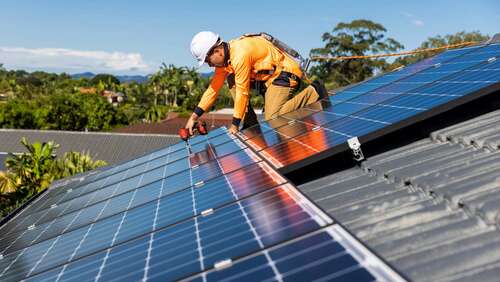
Before getting into the different types of panels, it’s useful to recap exactly how solar photovoltaic systems work. Each panel is, in essence, a way to capture the sun’s radiation and convert it into electricity. The rate at which it does so varies according to several factors, with the most well-known one being the amount of sunlight each panel receives per day. As a general rule of thumb, sunnier locations will result in more electricity generation, but recent advances in solar panel technology have improved certain panels’ efficiency rates in areas with less sunlight.
Most homeowners choose to install solar panels on their rooftop, so before installing any solar panel system, it’s important to consider your home’s rooftop potential. The size, design, and orientation of the roof will significantly impact what panel array can be installed. There are various online tools available to help measure your rooftop’s potential, including Google’s Project Sunroof, and they’re a good way to get an initial idea of both the expected cost of installation and the amount of electricity bill savings you can expect.

